For years, HR has talked about the “future of work” and the need to become more responsive and agile in a VUCA world. As Stacia Garr and the team at RedThread Research point out in this terrific report, the pandemic has essentially put us in a time machine, and organizations need to change the way they operate and support employees - now. Read the full article below and learn why organizations should aspire to be more like an octopus in this new work environment. Yes, an octopus.
Introduction
“Unprecedented”
“Uber-volatile”
“Super-complex”
These are just some of the words we’ve heard used to describe the events of 2020. As a result, all parts of organizations – including people analytics (PA) – have worked on overdrive to help leaders respond to this new work environment.
The challenge: Most organizations weren’t built for this amount of volatility and change, and so are struggling to manage it effectively. Existing hierarchical structures were designed for relative levels of stability. They impose information, decision-making, and control protocols that maintain maximum efficiency and limit local autonomy. While there’s certainly value in some centralization, in too big doses it hampers organizations’ abilities to move quickly and in localized ways – which is what they’ve had to do in responding to the current business environment.
To be clear, for years we’ve all been moving toward a “future of work” that was projected to be volatile, uncertain, complex, and ambiguous (VUCA), and which would require organizations to be more agile and responsive.
The COVID-19 pandemic put us all in a time machine and changed “the future of work” to “the now of work.”
This future has arrived – and organizations need a different operating model to function effectively in this new work environment.
Proposed New Operating Model: The Octopus
When people have needs that are completely different from before, we often look to other models and approaches for clues about how to respond. Many turn to nature for inspiration, in what is known as biomimicry.i For example, when engineers tried to design faster trains, they looked to Kingfisher birds for ideas; or when (other) engineers attempted to create better ventilation in buildings, they used termite mounds as a model.ii In this vein, we’d like to turn to the (not so humble) octopus as inspiration for a new approach to managing the “now of work.”
Yes, you read that right – an octopus.iii
We were recently surprised to learn that an octopus actually has 9 brains – a central brain to control the nervous system and a small brain in each of its 8 arms.iv This enables each of the 8 arms to work independently of the others in responding to its environment. Because of this (not in spite of it), an octopus is more aware of both disruptions and opportunities, and is thereby better able to respond to them.
In many ways, an octopus is an apt metaphor for the type of organization we need right now, one that has many brains which are distributed throughout the organization instead of holding them centrally. These smaller brains enable the many arms of the organization to act independently and respond faster and more effectively to its environment, while the central brain ensures that the smaller brains all work together toward a larger goal (see example of how this works in Figure 1).
Figure 1: How Octopus Arms Can Make Independent Decisions Without Input from Its Central Brain | Source: Science Alert, 2019v
So what does an octopus have to do with an organization that can operate in “the now of work?” Similar to the octopus, organizations that can respond to the current environment use many sensors to get multiple points of view (aka: data) about the environment, and then use that information to help them determine trends. Likewise, octopus-like organizations can respond as necessary to specific parts of the business environment – and respond differently, depending on need.
We call this “responsivity,” which we define as follows:
Responsivity is the ability of organizations to recognize trends in the operating environment and effectively turn possible disruptions from those trends into a distinct organizational advantage.vi
To better understand responsivity, we reviewed more than 100 articles on topics related to organizational responsiveness and created a comprehensive 90-item survey on the topic, which 373 HR and business leaders completed. In the course of our analysis, we created a Responsivity Index, which includes 7 questions designed to measure responsivity, such as the extent to which the organization openly shares information and is decentralized in structure.
We supplemented our analysis of these data with interviews with almost 30 leaders and a roundtable series that included more than 100 leaders.vii We also completed an additional set of interviews with approximately 20 people analytics practitioners, focusing on topics like “the future of work” and “people analytics’ role in enabling the organization of the future.” We did all of this to understand what responsivity is, what affects it, what separates organizations in the bottom quartile of the Responsivity Index (low responsivity) from those in the top quartile (high responsivity), if it matters to business outcomes, and how to create it.viii
Why Organizations Should Embrace High Responsivity
One of the most important questions to ask is:
Does being a high-responsivity organization (in the top quartile of the index) matter?
We know people think responsivity matters. For example, when we asked people analytics practitioners what an “organization of the future” should look like, we heard the following:
“An organization of the future is more biological and emergent than static and structured. It will have structure but will also have decoupled local cells that can respond and act with speed.”
– Michael Arena, VP of talent & development, Amazon Web Services
“It will be highly fluid, able to adapt to each and every context it is facing by business / country – none of this ‘one-model-fits-all.’ It must also be highly resilient, have a clear purpose, effectively leverage tech and data, and embrace the gig economy.”
– Alexis Saussinan, global head of strategic workforce planning & people analytics, Merck KGaA
“Organizations that can be agile, who can assess risk effectively, and who can make decisions quickly can adapt quicker to the needs of the future.”
– Chief data officer HR & global head of people analytics, finance industry
But does it actually matter, from a business-results perspective?
As it turns out, it does. We found that among organizations in the top quartile of our Responsivity Index, 95% of them meet or exceed their business goals, compared with just 21% of organizations in the bottom quartile. Similarly, organizations that scored high on our Responsivity Index report responding quickly to market changes, innovating faster than the competition, having satisfied customers, and encouraging higher levels of engagement among their employees (see Figure 2).
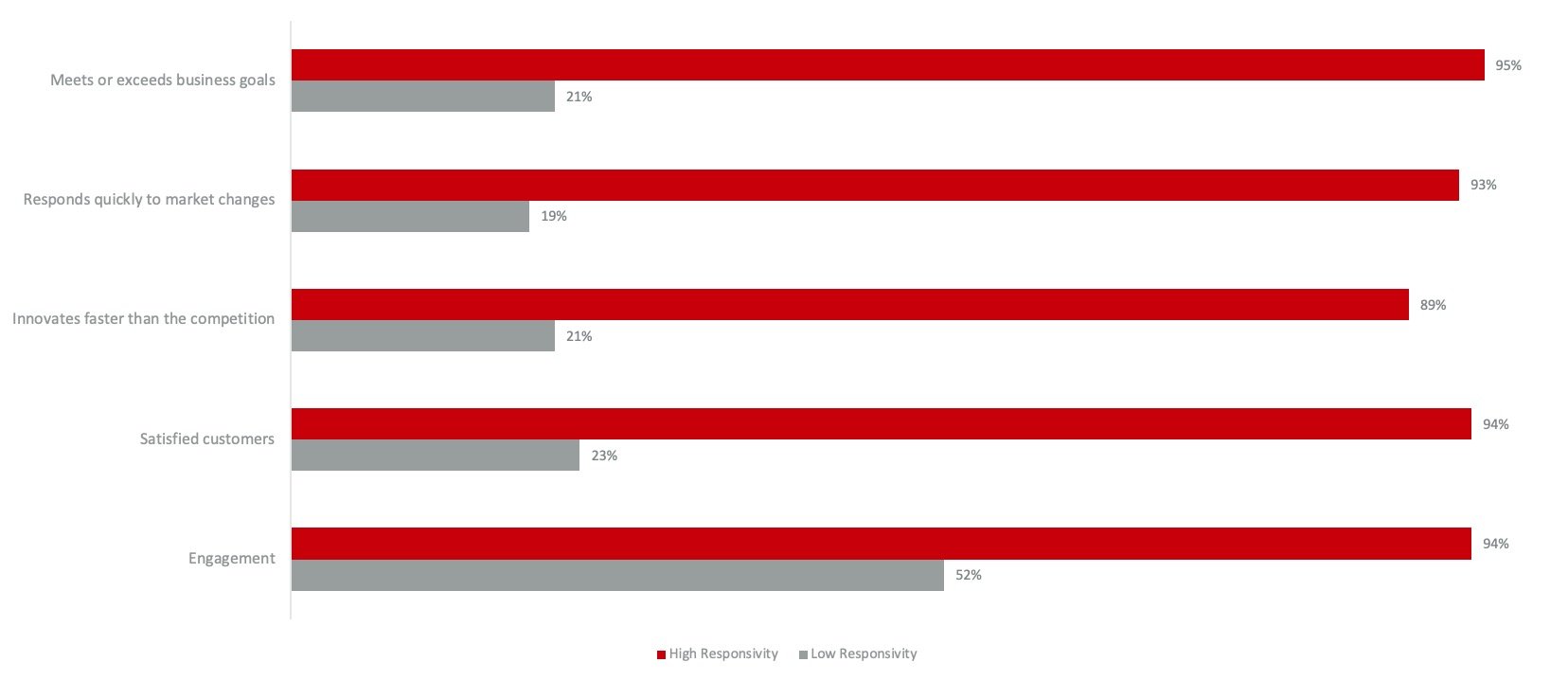
Figure 2: Business Outcomes of Organizations, High Responsivity vs. Low Responsivity | Source: RedThread Research, 2020.
The 4 Lenses of High Responsivity
Given this, how does an organization become more responsive?
Our research shows that to create a responsive, octopus-like organization, leaders should use 4 lenses when implementing people practices, processes, and technology.
These 4 lenses (see Figure 3), respect, distributed authority, growth and transparency, and trust, are enablers – things that if effectively integrated – enhance other people practices. They are not fundamentally new practices.
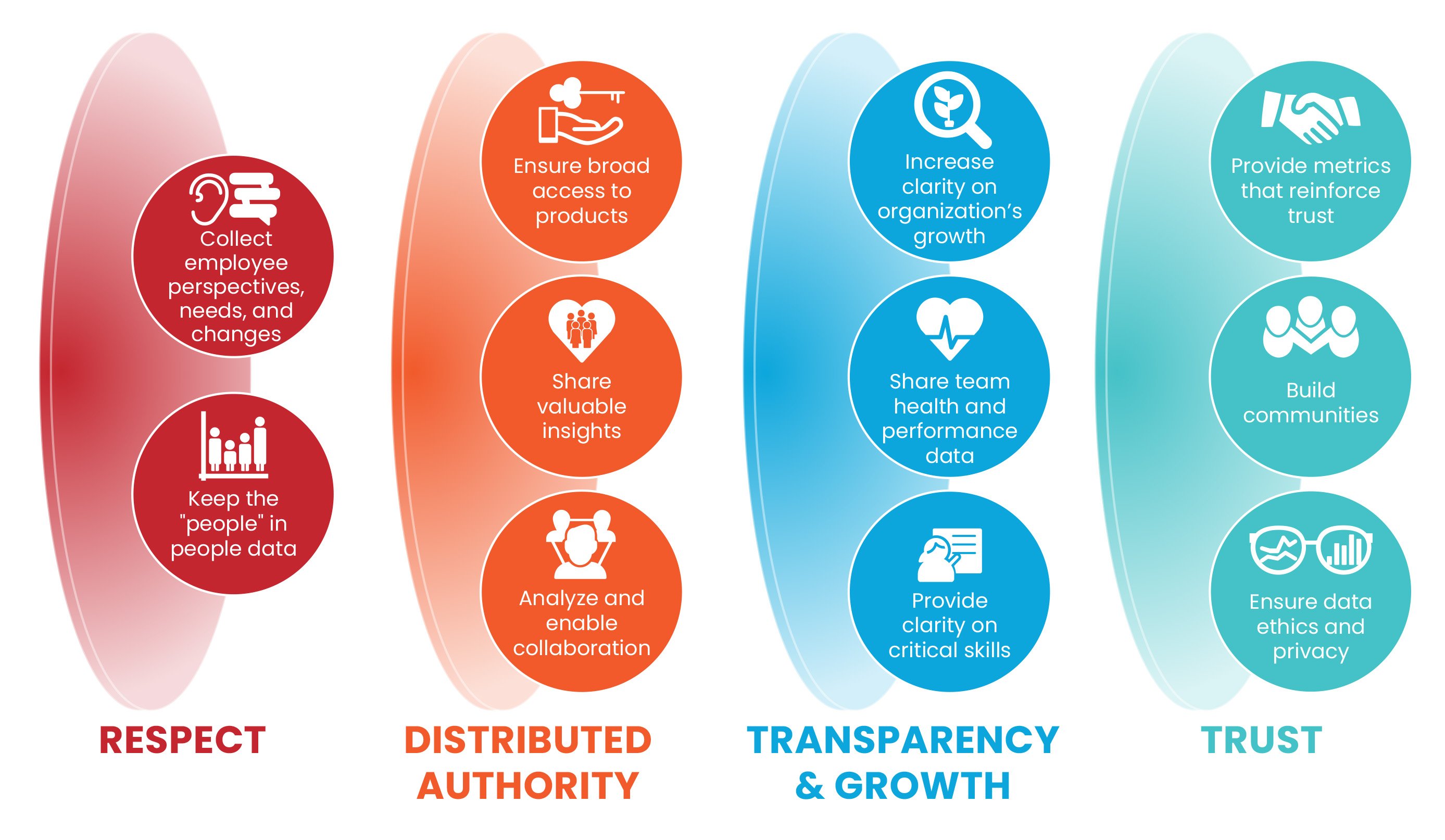 Figure 3: A Model for Responsivity | Source: RedThread Research, 2020.
Figure 3: A Model for Responsivity | Source: RedThread Research, 2020.
We use the term “lenses” very intentionally: Lenses are transparent, but generally change how things look. Also, all of the lenses are of equal importance. They can be used all at the same time or in different orders to develop and enhance existing practices. That said, while some of the lenses may seem similar (you might be asking yourself, “What’s the difference between respect and trust, anyway?”), our analysis and interviews reveal that each of the lenses is distinct. For example, respect is more about if people feel heard, whereas trust is more about if people feel connected to each other. Organizations may have one without the other – but it’s the combination of all the lenses that’s most powerful.
Enter People Analytics
While the role of people analytics may not be immediately apparent, our analysis found people data and technology to be critical to creating a responsive organization.
In short, people analytics can provide targeted, localized insights and channel that information to the relevant parts of the organization. It can also, through the types of information that are measured and how those are conveyed, influence the conversations that enable responsivity.
But how, exactly, should people analytics do that? What are the practices PA practitioners can use to enable this responsive organization? This article is our exploration of the role of people analytics in creating responsive organizations – effectively supporting the “now of work.”
People Analytics’ Role in Building Responsive Organizations
In our interviews with PA practitioners, we asked how they envisioned their role in creating an organization prepared to respond to the needs of “the future of work.” (We started asking this question before COVID-19, changing it to “the future that is now” as the pandemic unfolded.) The quote below is representative of what we heard:
“You have to enable, for the organization, a focus on innovation and agility. You have to provide information and insights that are easy to consume and enable the organization to make business decisions quickly.”
– Dawn Klinghoffer, people analytics lead, Microsoft
The challenge always comes, though, in how to actually do this. While a business-aligned approach is critical, it’s not enough to enable responsivity. This is where the 4 lenses come in.
Lens 1: Respect
While we mentioned earlier that there isn’t necessarily a “right” order for the lenses, we do know that respect is foundational to responsivity. Employees should feel respected for their abilities, knowledge, skills, and ideas.
In our study, some of the significant items for respect include gathering “bottoms-up” information, having autonomy and respect from managers, and providing psychological safety.ix
A foundation of respect often means taking a step back from some of the Tayloresquex systems, processes, and policies that organizations put into place to ensure efficiency and “sameness.” For respect, organizations need to shift their focus to the differences:
- The individuality of employees
- Individuals’ skills, knowledge, and capabilities
- How individuals combine in different ways to create impact
This is an opportunity for people analytics to shine, given its ability to provide highly individualized insights.
PA’s Role in Building Respect
Given that people analytics practitioners are not directly in the room with employees, it may seem difficult for them to influence respect. This, however, is hardly the case. Some of the most robust examples of how PA can help enable respect include the following:
- Collecting and analyzing data on employees’ perspectives, needs, and changes – Including specifically understanding their unique current reality, focusing on topics such as psychological safety, barriers to doing work effectively, access to resources, etc.
- Keeping the “people” in people data – Looking for stories and qualitative data that brings the quantitative data to life, and remembering that people data represents individual people
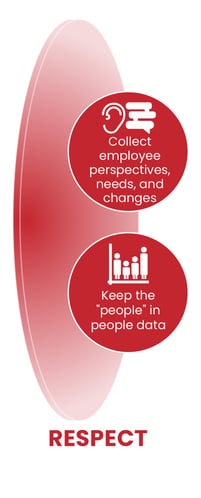
Figure 4: PA’s Role in Building Respect | Source: RedThread Research, 2020.
Keeping our octopus metaphor in mind, these practices together build greater responsivity because, for individuals, they create environments in which they can share what they’re seeing and feeling. For organizations, these practices enable leaders to effectively collect and digest this information, while staying in touch with the very human aspect of their data. Speaking to the bulleted points above, one of our interviewees stated:
“A strategy for 'continuous listening' to gather employees' perspectives is important in all times, but in our current COVID-19 moment, it's truly critical. We should be deploying questions to employees on a weekly basis, starting with the basics such as, ‘Do you feel safe? Do you have what you need? What would help you to remain productive?’ What you ask about communicates what you care about. People analytics teams should be driving this.”
-- Nicholas Garbis, VP of people analytics strategy, One Model, Inc. (former leader of workforce planning, Allianz & General Electric)
During our interviews, a financial services firm shared how its PA team uses its employee experience survey to understand employees’ perspectives and the challenges preventing them from doing their work successfully. The team analyzes open-ended questions on what employees think about the company, the environment in which they work, and what can be improved. It shares the results by using powerful visuals that depict the different topics discussed, including compliments and complaints, which could be further analyzed by business level. Leaders have been very enthusiastic about this new information, as it provides understanding of employee voice quickly and easily, and allows them to initiate targeted actions.
Remembering the human aspect of people data is also essential in building and enabling respect. One PA leader told us about his organization’s efforts to keep its analysis “human” and achieve a greater contextual understanding of the data by finding the outliers – and putting names and stories with those cases – to better understand the recommendations they should make.
Another PA leader said it eloquently:
“We all need to remember that this is people data: What people think, feel, how they are paid. Our analysis affects their lives and jobs. Someone in your data set had a bad day, someone didn't show up well, someone had something happen. We’re not dealing in shades of blue to drive click-through rates. We’re not counting widgets. We have to impress that on anyone who wants you to do any people analytics work – we are the stewards of that respect line.”
– Head of global talent analytics & research, multinational technology company
Respect During Crisis
During the COVID-19 crisis, one of most effective ways PA functions have shown respect for their employees is by tuning and adjusting their listening channels and strategy to capture the changing needs, experiences, and impacts of their employees.
For example, Colt Technology Services, a provider of high bandwidth services, was faced with the challenge of keeping its newly remote managers and employees engaged and motivated as they responded to a surge in their network traffic. In the past, the company’s listening strategy had relied on an annual employee survey, pulse surveys to capture real-time employee feedback, and surveys supporting strategic initiatives.
Due to uncertainty and stress brought on by the COVID-19 crisis, the company realized it needed to fine-tune and refocus its listening strategy to quickly uncover and address employee concerns. Colt Technology implemented a range of informal and formal listening activities along with the opportunity for employees to post anonymous questions. The active listening helped leadership understand what was important to employees during the crisis. The company implemented a number of important policies, including providing financial support to help employees set up a home office and making the commitment to pay a substantial proportion of sick pay if an employee happened to contract the virus.xi
Another approach was used by Nestlé, when it turned to an active internal crowdsourcing platform (previously used to solve supply-chain issues) to identify ideas for enhancing health and safety across its sites during COVID-19. As the company’s head of employee innovation remarked:
“The impact of crowdsourcing ideas is phenomenal. What started with a bottom up open innovation process for IT to solve supply chain issues 6 years ago has grown to accelerate business innovation in areas such as new products, services, sustainable packaging, manufacturing, agriculture and, of course, in holistically navigating COVID-19.”xii
What other ways have you seen people analytics help build respect within organizations?
Lens 2: Distributed Authority
Responsive organizations distribute authority throughout the organization – broadly and deeply – within their ranks and empower all levels of the organization to act. Similar to the video of the octopus, distributed authority allows, within reason, each of the “arms” of the organization to make decisions and operate without explicit approval or guidance from the centralized “brain.” Organizations with high responsivity rely on guiding principles, quality data and insights, and employees’ understanding and capabilities to speed up decision-making and action.
The specific items for distributed authority from our survey are broad decision-making rights, diverse and engaged teams, and broad collaboration.xiii
It’s important to note that, while clarity around what decision-making rights employees have is central to high responsivity, it’s not enough. Organizations need to, at the same time, ensure that employees feel empowered and have the support they need to use those rights and make decisions. This is where access to data, insights, networks, and collaboration come in. By providing access to these resources, which are needed for decision-making and enabling collaborative behaviors, organizations can enable higher-quality and more inclusive decision-making.
PA’s Role in Distributed Authority
If we go back to our metaphor of the octopus, with PA serving as the sensors, the absolutely critical role of people analytics in distributed authority becomes abundantly clear.
Without high-quality data and insights, it’s extraordinarily difficult for local teams to understand their specific situations quickly enough to make the appropriate decisions and act on them.
As one interviewee put it,
“We have to empower people throughout the organization with data. They need powerful business intelligence dashboards with no latency, so they can start slicing and dicing immediately. People analytics should be enabling this.”
– Dawn Klinghoffer, people analytics lead, Microsoft
Some of the ways we’ve seen PA support distributed authority include:
- Designing analytics products accessible to a broad set of users – Making data and insights widely available to all employees, including diverse employees who may not have access to the networks that typically have critical information
- Sharing insights that are valuable to employees and managers – Ensuring that the data provided to different users is relevant to their specific decisions and avoiding providing information that is merely interesting
- Analyzing and enabling collaboration – Providing resources that enable employees to collaborate more effectively and broadly, and thus make better decisions
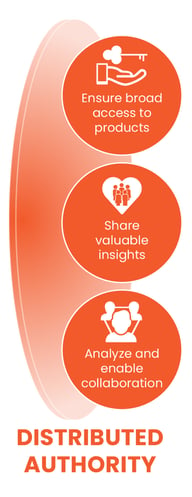
Figure 5: PA’s Role in Distributed Authority | Source: RedThread Research, 2020.
The first bulleted point above highlights the need to address the underlying assumptions many organizations have that data and decision-making should be limited to a group of senior leaders. For example, when beginning the project intake process, the PA team at ABN Amro holds discussions with leaders to understand why the topics they’re investigating are important to leadership, what the hypotheses are, and what they are going to do with the results:
“What we are trying to do is drive action. During the intake phase, we ask: Are our insights going to be used, or will the leadership pick the two that they like and discard the rest? We are asking for commitment before we move ahead.”
– Patrick Coolen, global head of people analytics, ABN Amro
Sweetgreen is an example of how an organization can share relevant insights with managers and employees. As a restaurant chain, the company needed to understand employee sentiment and enable action-taking on feedback at both the corporate level as well as among employees working as frontline staff workers at the restaurants. By leveraging a people analytics solution that could analyze data from the stores and teams, and provide customized action recommendations directly to the employees and managers, Sweetgreen was able to drive actions at the individual employee level. As a result, more than 75% of employees reported taking action because of the email recommendations received and 80% said that the “nudged” changes in behaviors have made work better.xiv
“If we want our organizations to be more human and more responsive, we have to empower managers more. Give them more structure and insight on how to manage people and give them a way to share how they want to be managed. Surface customized insights for managers on how they can engage their team better – and then they will do better.”
– Brian Fruchey, former head of people analytics, Indeed.com
Moving on to the collaboration point, PA leaders are increasingly using organizational network analysis (ONA) to understand how collaboration is happening within organizations. General Motors (GM) is a prime example of using ONA to identify potential areas of innovation, and empowering employees and groups to take action.xv The company realized that, to stay ahead in the constantly innovating and competitive automotive industry, it needed to ensure that the best ideas and projects are moved to production. The company leveraged ONA to understand where it needed to create “adaptive spaces” that connected innovative pockets with the company’s operational functions. The then chief talent officer at GM built an organizational context which pushed new ideas and concepts from entrepreneurial pockets within the organization into production and action. This not only resulted in a greater number of ideas coming to fruition but also helped clear out noise and enabled faster decision-making.
Distributed Authority During Crises
One of the ways people analytics can help organizations distribute authority, empower people, and enable quick decision-making during the current crisis is by sharing data and insights that help them take actions. An example of this comes from Workday which, within a week of the pandemic hitting, doubled down on its efforts to capture employee sentiment. Once the company had the data and conducted analyses, it shared those insights directly with its people leaders and accompanied that with context-based, specifically curated actions which people leaders can take to support their teams.xvi
“How do we help secure and safeguard people’s wellbeing, how do we support them in a remote context, and then how do we enable and support their productivity so they can support our great customers? That’s what we measure on an ongoing basis and what we use to think about how we can help our people leaders take action.”
- Greg Pryor, SVP people & performance, Workday
An example of using ONA during the current crises comes from a global healthcare provider that was looking to optimize cross-functional collaboration across its organization. The data analysis helped identify cross-functional “boundary spanners” – individuals who act as connectors across diverse teams and groups within the company. Once identified, the company decided to survey these cross-functional influencers more frequently during the current period of rapid change, to provide feedback on organizational issues and challenges from the frontlines. By mobilizing an agile network of teams that included these “boundary spanners” who often exist outside the traditional hierarchical structure, the organization was able to adopt a rapid and responsive decision-making approach, and support greater collaboration.xvii
Lens 3: Transparency & Growth
The events of 2020 have highlighted just how quickly markets and industries can shift – and the resulting need for organizations to change direction on a dime. This requires organizations to continuously communicate that direction to employees and clarify how it affects their day-to-day work. It also requires organizations to ensure employees have the knowledge and skills needed to execute.
While on the surface it might not be obvious how transparency and growth go together, our analysis and interviews revealed a link between the two. Employees need both a high degree of transparency into how they and the organization are doing AND broad encouragement to learn, grow, and at times fail – to enable them to act responsively on behalf of the organization. Specifically, by providing greater transparency around performance and development through data and insights and by helping employees understand the resources they have at their disposal to prepare for the future, organizations enable responsivity.
Our analysis revealed 3 specific items that are critical to transparency and growth: transparent performance, skills and growth resources, and managers and leaders as enablers.xviii
PA’s Role in Transparency & Growth
People analytics has a primary role in creating greater transparency and helping understand how growth is or isn’t happening in an organization. Some of the most obvious ways PA can do this is by:
- Supporting continuous feedback and goal alignment to increase clarity around the organization’s overall growth - Providing resources for transparent and honest feedback and reviews, and helping employees align their performance with the company’s overall goals
- Sharing more data with managers and employees regarding their team’s health and performance – Including information on how they work and performance on goals / objectives and key results
- Providing clarity around critical skills – Collaborating with the learning team to understand the supply and demand of future skills, and how L&D resources can enable the growth of critical skills
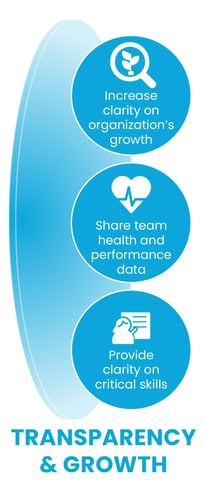
Figure 6: PA’s Role in Transparency & Growth | Source: RedThread Research, 2020.
An example of enabling transparency and growth through feedback and goal alignment comes from Privia Health. The company overhauled its existing performance review process which was tedious and unstructured by bringing in a people analytics solution that allowed for a more streamlined approach to employee feedback, performance check-ins, and goal alignment. By leveraging the PA solution’s capabilities, the organization was able to activate continuous feedback. For example, 86% of employees downloaded a new email plug-in to submit feedback, driving greater transparency around performance. The company also saw a 20% increase in goal setting and adoption, and an increase in the number of teams performing more frequent quarterly goal check-ins – reflecting a growing focus on development.xix
Currently, a significant amount of data is captured on employees’ performance, but it’s often not integrated and made available to leaders, managers, or employees. This limitation hinders everyone’s ability to respond quickly to changes in the environment.
The analytics team at EY designed a dashboard for their global organization (155 countries) accessible by HR professionals and senior business leaders that blends data across a wide range of years, providing 120+ attributes for each employee. This dashboard presents information on critical topics like sales, profitability, and utilization data – with much of that information not previously available in such a manner (i.e., specific ratios on productivity). What makes this dashboard unique is that it combines critical data with insights about employees’ experiences, with tabs showing survey results from several employee tenure periods such as recruiting, onboarding, 90-days, 120-days, and, eventually, exit. The idea is to understand how people are thinking and feeling across their entire employee experience, and for the business to be able to see those insights in real-time.
“Our dashboards are among the simpler things we’ve built. Yet, they are one of the highest-impact products we’ve delivered, as they bring together many, many different data sets that were not previously connected and makes them available to managers and employees. This dashboard is at the core of how our business manages and understands people performance. The transparency this provides allows the business to know where it stands and where it needs to grow.” – Blair Hopkins, People Advisory Services, EY
SAP realized that one of the ways it could help its managers improve their communications with their direct reports was by collecting and sharing data on the frequency, tone, and responsiveness of their communications. The company leveraged a people analytics technology solution to analyze meta-data, and deliver personalized coaching and feedback to managers – directly to their inboxes – on the areas that they could potentially improve and recommended steps they can take. As a result, 83% of managers reported an improvement in their self-awareness of how they interact with their teams. Additionally, the company also saw a 17% increase in the level of recognition of employees’ efforts by the managers using the solution.xx
Moving to the last bullet on the topic of skills, our research shows that PA’s role in identifying critical skills – and associated gaps – is becoming ever-more important. As one interviewee stated:
"We’re starting to see a much bigger focus on skills and, in particular, on identifying adjacent skills. So, if someone knows one thing, they might also know something else – or, critically, be able to learn it. This gives us a much better ability to understand our current capabilities and which skills we may be able to acquire by growing our people versus investing in new people.”
-- Marilyn Becker, senior director, people analytics & HR technology strategy, Western Digital
We’ve seen relatively few examples of learning and PA teams partnering on the question of the existing skills in the organization to provide greater clarity around the effectiveness of resources in growing those skills – we think this is a huge area of opportunity. Working with the learning team, PA can provide tools and support to help employees understand their skills gaps for their current responsibilities, for responsibilities they might be interested in, and for responsibilities the organization knows it will need in the future. In addition, we increasingly see PA working with learning to understand how existing learning resources are being used and the extent to which those resources are addressing skills gaps.
At ABN Amro, identifying and shrinking existing skills gaps at the organizational level, and investing in learning and skill measurement at the individual level are 2 of the 3 core pillars its HR strategy is built on. The PA team is particularly interested in looking at individual skill assessments through a learning experience tool that provides learning content to employees in a user-friendly manner, and allows the team to track and assess an individual’s skill maturity and how they’re performing.
Transparency & Growth During Crises
Transparency & Growth During Crises
One of the biggest changes we’ve seen since the start of the COVID-19 pandemic is a focus on providing managers and employees with more insights about how they’re doing since moving to a work-from-home environment. For example, we’ve seen numerous PA vendors offer work-from-home reports for managers and individuals that provide data on:
- Total meeting time
- Amount of uninterrupted focus time
- Amount of after-hours email
- Work activity
- Workday length
- Manager responsiveness
Managers and employees can then use these data to talk about their new working styles, what needs to be adjusted, and the support managers can provide.
Another area of significant importance during the pandemic has been skills identification to support the redeployment of resources. Given that COVID-19 hasn’t just caused a health crisis but also an economic one, National Australia Bank (NAB) is finding that a higher-than-average number of customers (e.g., individuals, small business owners, and larger businesses) than usual are looking to the bank for assistance. To manage the higher volume of phone calls, emails, and chats, the PA team identified individuals with previous customer-facing experience – which helped the bank redeploy 700 people into customer-facing roles. This was all done within a few days of the need identification.xxi
“The ability to redeploy 700 people within a few days shows the importance of having good HR data in a time of crisis.”
– Thomas Rasmussen, executive general manager, employee experience, digital & analytics, National Australia Bankxxii
Workday has used a different approach during the recent health and societal crisis. The company’s team put specific insights related to team stress and resilience and belonging and inclusion directly on every manager’s dashboard. The PA team then sent specific “nudges” to each manager, with a guide on how to have a conversation with their team’s ability to deal with emotional exhaustion and stress.
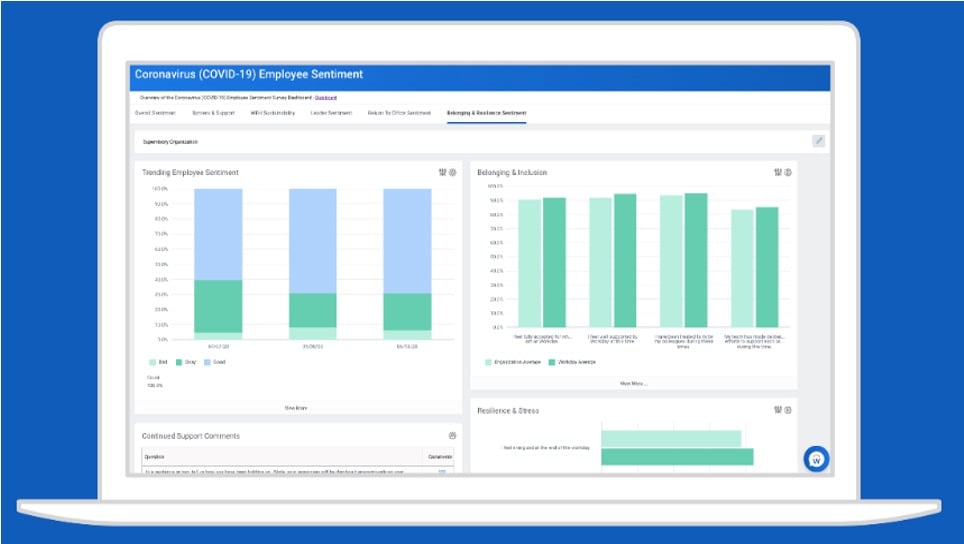 Figure 7: Personalized Employee Sentiment Available to all Managers at Workday | Source: Workday, 2020.
Figure 7: Personalized Employee Sentiment Available to all Managers at Workday | Source: Workday, 2020.
Lens 4: Trust
Organizations with trust don’t just respect and listen to employees – they adopt a community mindset. These organizations have ceased to think in terms of “us” (management) and “them” (employees), and instead have adopted a “we’re all in this together” attitude – one that helps employees learn from their mistakes and invests in solving problems together. Continuing our octopus metaphor, this is the ability for all “arms” to trust that each one’s doing the right thing – and that the central “brain” of the organization is doing the right thing, too.
The specific items our survey revealed as most important to building trust are how the organization handles failure, brings outside perspectives inside, and builds community.xxiii
PA’s Role in Creating Trust
Similar to respect, it may seem as though PA isn’t directly tied to the organization’s ability to create trust. However, we think this is a fundamental role for PA in the following ways:
- Providing analyses and metrics that focus on activities which reinforce trust – Such as normalizing failure, and reinforcing trust in employee decision-making and information-sharing
- Helping people understand their communities – Who is in the community, how to build them, and how to make them stronger
- Keeping issues of data ethics, privacy, and access central to the efforts at all times – Ensuring that all data is collected and used ethically, continually updated, and communicating the value to the employees
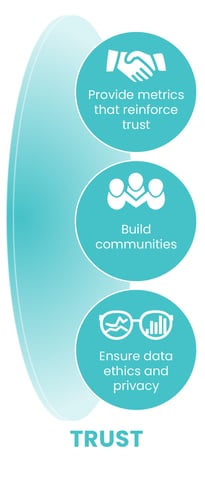
Figure 8: PA’s Role in Creating Trust | Source: RedThread Research, 2020.
We haven’t encountered many examples of organizations thinking through what the relevant PA metrics could be for encouraging trust, but we think that many of the concepts we’ve introduced in this article could form the basis of new metrics, such as:
- Number of “intelligent failures” – Number of times per year when employees tried something that seemed like a good idea, but ultimately didn’t work; this could be reported at individual and organizational levels
- Breadth of decision-making rights — Frequency with which different people at different levels feel comfortable and psychologically safe to make critical decisions without approvals
- Extent of data-based information-sharing – Frequency with which critical information is shared with different people at various levels
While not obvious on the surface, PA can play a crucial role in building communities and helping organizations foster trust among groups and teams. Workday helps its employees, or “workmates” as it calls them, understand and build communities through peer recognition and feedback. Workday Human Capital Management (HCM), the HCM application which the company also uses internally, has a feedback feature that allows people to recognize and give feedback to their colleagues anytime. With the help of the PA team, the company realized it was taking new employees around 145 days to receive their first peer recognition which, for some job profiles, was a bit longer than expected. In order to ramp up and accelerate the time to recognition, the analytics team launched a new pilot program called “MatchUp” that uses a serendipity algorithm to pair a new employee with someone in the organization to have a conversation about what it is means to work at Workday. Having conversations about the culture of the organization resulted in positive impact on the peer recognition network as new employees felt a sense of inclusion, and began receiving recognition and feedback more quickly.
One of the ways Telstra, an Australian telecommunications company, strengthens and maintains trust is by sharing responsibility and access with employees to its own data. The company maintains an internal site called MyCareer that allows employees to keep and update their own data, and even challenge any incorrect or incomplete inputs.xxiv
“As an employer, we should allow employees to manage aspects of their data, and for it to be a joint exercise.”
- David Burns, group executive, global business services, Telstra
In addition, for the PA team at Western Digital, data ethics and transparency are very important. Questions, such as what data they are collecting, what they are going to do with it, how will it benefit the organization and the employees, and what will happen with the results, are central to its approach. If the PA team solicits feedback or collects data for a leader, the team ensures that high-level results are shared with the wider team. Such actions go a long way in building trust and communicating that organizations value employees for their contributions.
One interviewee spoke for many when he said:
“Create trust and transparency in everything you do. Share with employees what you measure and be conscious about it. Employees have to trust and understand what you do, otherwise you will lose them.”
– Patrick Coolen, global head of people analytics, ABN Amro
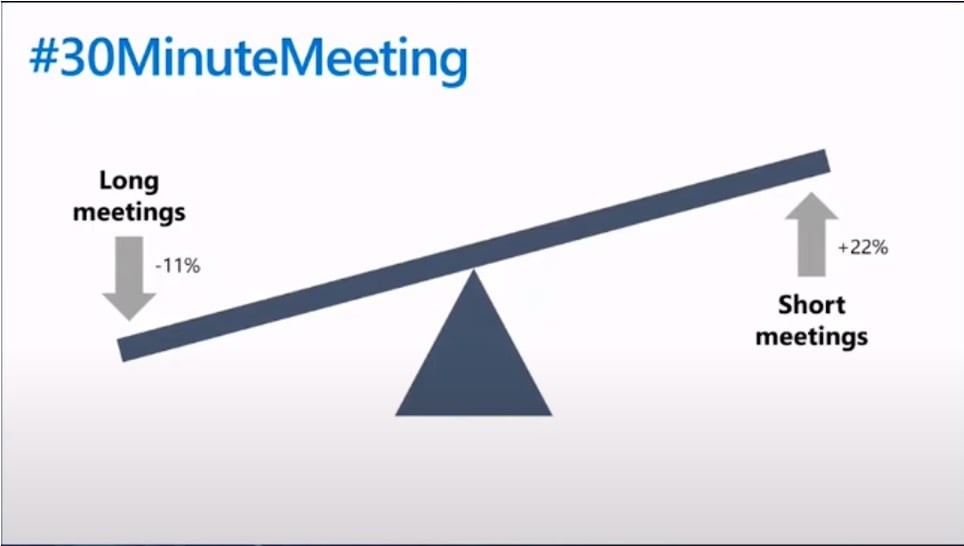
Figure 9: Percentage Change in Microsoft China Employees’ Networks During Work from Home | Source: PAFOW Europe Online, 2020.
We’re sure there are other ways to engender trust – especially when it comes to issues like normalizing failure.
Conclusion
Let’s return to our running example of the octopus. Similar to how its 8 arms can function independently of each other and are thus more aware and responsive to its surroundings and environment, organizations too need to activate and enable their many “arms.” This will allow them to become responsive to their surrounding disruptions and environment, while the center ensures they all work together toward a larger goal.
Organizations can do this by leveraging the 4 lenses – respect, distributed authority, transparency and growth, and trust – to enable their people practices. PA teams have a crucial role in helping their organizations achieve this by doing things like collecting employees’ perspectives on what they need from the workplace, making data more broadly relevant and accessible, providing managers and employees with insights to manage their performance, and supporting and putting in place metrics that really measure responsivity. To put it bluntly, organizations will struggle to be responsive without a strong and aligned people analytics team.
The current crisis has seen many PA practitioners do amazing work to help their organizations respond effectively. However, this work has required many of them and their organizations to bend and flex in difficult – and sometimes unsustainable – ways. Our hope is that, with the approaches laid out in this article, PA leaders can help create an octopus-like organization, which can both be flexible and responsive to certain types of challenges, while still maintaining a coherent and clear central direction. The volatility and uncertainty of this moment is here to stay. By designing for responsivity, organizations can be ready for “the now of work.”
We would like to acknowledge the contributions made by those who gave their time to this research by speaking to us and sharing their thoughts and insights. In particular, we would like to thank Marilyn Becker, Patrick Coleen, Brian Fruchey, Nicholas Garbis, David Green, Blair Hopkins, Dawn Klinghoffer, RJ Milnor, Annemieke Nennie, Alexis Saussinan, Ben Teusch, Phil Willburn.
There are many others whom we cannot name publicly but would like to extend our gratitude, nonetheless. You know who you are. Our research would not have been possible without all of these contributions.
Seeing The Way Forward
The Perceptyx platform gives you the flexibility to adapt your listening strategy to rapidly changing real-time events. Combined with support from our analytics experts, our platform can help you keep your finger on the pulse of your people’s needs, so you can provide the support they need during these uncertain times. Get in touch to see how we can help your organization navigate successfully through the COVID-19 pandemic.
Find action planning guides, related blog articles, information on COVID-19 pulse surveys, and more on our COVID-19 Response Resources page.

